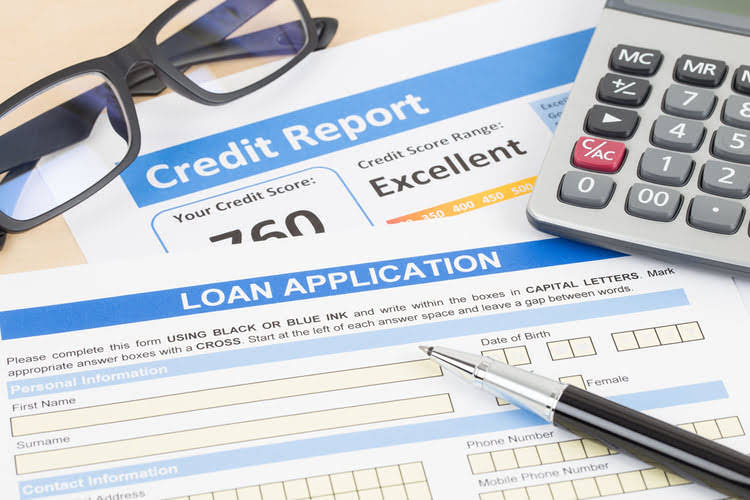Content

Anastasia is a FinTech writer with experience working as a freelance writer for small business owners. She has participated in numerous events dedicated to business management and marketing. Anastasia is inspired by the fact that each successful business is a result of proper structuring so she tries to analyze every step and wants to share her observations with others.
Where does shipping go in a P&L?
Shipping costs make it into the SG&A section of a statement of profit and loss, also known as an income statement or report on income. Accountants subtract all expenses from corporate revenues to calculate pretax — or taxable — income, which becomes net income after the reporting business settles fiscal obligations.
The seller will be responsible for the shipping costs, which will be an expense in January when the sale is reported. The buyer should record the purchase, the account payable, and the increase in its inventory as of December 30 . Since the goods on the truck belong to the buyer, the buyer should pay the shipping costs. These shipping costs will be an additional cost of the goods purchased. In FOB shipping point agreements, the seller pays all transportation costs and fees to get the goods to the port of origin. Once the goods are at the point of origin and on the transportation vessel, the buyer is financially responsible for costs to transport the goods such as customs, taxes, and fees. Though in line with the accounting treatment mentioned above, it is worth explicitly calling out that FOB shipping point and FOB destination transfer ownership at different times.
5 Shipping Terms
And have rich experience in handling dangerous goods customs clearance, free warehouse services, can meet your arbitrary needs, and a variety of transportation https://www.bookstime.com/ options for you to choose. Today, we are going to discuss one of the most commonly used international trade terms in international shipping — FOB.
Free on board shipping point and free on board destination are two of several international commercial terms published by the International Chamber of Commerce. It’s important for the moment of sale to be accurately recorded for this reason, and also for entry into the company records. Unlike FOB shipping point, FOB destination, indicates that the ownership of goods is not transferred to the buyer until they arrive at their destination. Hearst Newspapers participates in various affiliate marketing programs, which means we may get paid commissions on editorially chosen products purchased through our links to retailer sites. 20 Sold $4,900 of antiques on the account; credit terms are 1/10, n/45, FOB destination. 1.Determine the cost of goods on hand at the beginning of the accounting period. Import fees when they reach the border of one country to enter the other country under the conditions of FOB destination are due at the customs port of the destination country.
Insurance Claims Under FOB Shipping Point Terms
If a shipment is designated as FOB Shipping Point, the sale will be recorded in the accounting system as soon as the shipment leaves the seller’s dock. At the same time, the buyer will record in its accounting system that inventory is on route. That inventory then becomes an asset in the buyer’s accounting books even though the shipment hasn’t yet arrived. Because the buyer assumes liability after the goods are placed on a ship for transport, the company can claim the goods as an increase in inventory.
On the other hand, FOB Destination allows the buyer to add the inventory only when the purchase shipment reaches perfect condition. Also, under FOB Destination, the buyer has to take care of fewer things. Here, the buyer owns the goods en route to its warehouse and thus, must bear the delivery charges. So, if the goods get damaged in transit, the buyer must file a claim with the insurance company. Under delivered duty paid , the seller is responsible for the cost of transporting goods until customs clears them for import at the destination. Cost, insurance, and freight is a method of exporting goods where the seller pays expenses until the product is completely loaded on a ship. Assume a fitness equipment manufacturer receives an order for 20 treadmills from a newly opened gym across the country.
Example of FOB destination
Since the buyer takes ownership at the point of departure from the supplier’s shipping dock, the supplier should record a sale at that point. The buyer should record an increase in its inventory at the same point (since the buyer is undertaking the risks and rewards of ownership, which occurs at the point of departure from fob shipping point the supplier’s shipping dock). Also, under these terms, the buyer is responsible for the cost of shipping the product to its facility. FOB shipping – an acronym that stand stands for free on board – designates that the seller agreed to pay at least a portion of distribution costs to make shipping easier for a buyer.
How do I classify shipping in Quickbooks?
- From the List menu, select Item List.
- Select New on the Item drop-down.
- On the TYPE field, select Service.
- You can enter the Shipping Fee as the Item Name/Number.
- Enter a negative number as the Rate.
- Select an Account.
- Click OK.
More and more small businesses are now relying on freight to transport their goods from one region to another. On the flipside, the buyer must note in its accounting system that it has inventory on its way. That also means that if a pallet of jewelry is lost or damaged in shipment, the buyer must file any claims for reimbursement – not the seller – since the shipment became the buyer’s responsibility immediately. In this article, you will learn what FOB shipping point and FOB destination mean in regard to the sale of goods, as well as the key differences that set these two terms apart. Incoterms define the international shipping rules that delegate responsibility of buyers and sellers.
AccountingTools
Enter a payment from the customer when the invoice closes, as with any other payment. Enter the invoice paid amount, including any freight charges passed along as part of the FOB agreement, as “Cash in, A/R” in the general journal. When the buyer incurs the transportation costs, these costs are considered part of the cost of purchasing inventory. Cost of goods sold is the total cost of merchandise sold during the period. This expense is directly related to the revenue recognized from the sale of goods. FOB shipping point implies terms of sale under which title of goods passes to the buyer at the point of shipment.
- Is listed on the purchase contract, this means the buyer pays the shipping charges (freight-in).
- He orders some TNT explosives from Acme in order to set his plan in motion.
- FOB also determines when a business will record a sale for accounting purposes.
- In this case, both seller and buyer record the transaction in their accounts on December 30.
It is important to note that FOB does not define the ownership of the cargo, only who has the shipping cost responsibility. Merchandise Inventory increases and Accounts Payable increases by the amount of the purchase, including all shipping, insurance, taxes, and fees [(40 × $60) + (40 × $5)]. This invoice indicates the total purchase price and other relevant information. Instead, the purchaser uses as a purchase invoice a copy of the sales invoice sent by the seller. The operating cycle of a merchandising company ordinarily is longer than that of a service company. The purchase of merchandise inventory and its eventual sale lengthen the cycle.
Horngren’S Financial And Managerial Accounting
AccountDebitCreditPurchases$$$Accounts payable/cash$$$And if the buyer uses the perpetual inventory system, it will be the debit of the inventory account instead. Company A puts the goods onto a common carrier on December 30, and the same arrives at the buyer’s location on January 2. If the goods are damaged in transit, the buyer should file a claim with the insurance carrier, since the buyer has title to the goods during the period when the goods were damaged. Although FOB shipping point and FOB destination are among the most common terms, there are other agreements that vary from these two.
